A great cup of coffee starts with great coffee beans.
Just like any great recipe, it all comes down to the ingredients you use. The most important factor in a great tasting brew is choosing the right coffee beans.
The country in which coffee is grown is tantamount to determining the final brew’s taste, acidity, and complexity. The climate, altitude, soil composition, and harvesting procedures all play an important role during the farming process. As with any crop, the care that is put into growing, harvesting, and processing the coffee cherries will also have an effect on the final product.

Coffee is grown all over the world, between the Tropics of Cancer and Capricorn, and each country and region has its own signature profile that you can pick up on. In general, beans from Central America tend to have a fruity and balanced composition, while South America’s beans are known for their medium body and mellow acidity, and Kenya and Ethiopia produce savory-sweet beans unlike anywhere else.
The countries listed below will give you an idea of the spectrum of flavor profiles in each region; this is not a definitive list by any means, but rather a starting point to encourage you to explore and discover the unique flavors of each country for yourself.
Coffee Belt
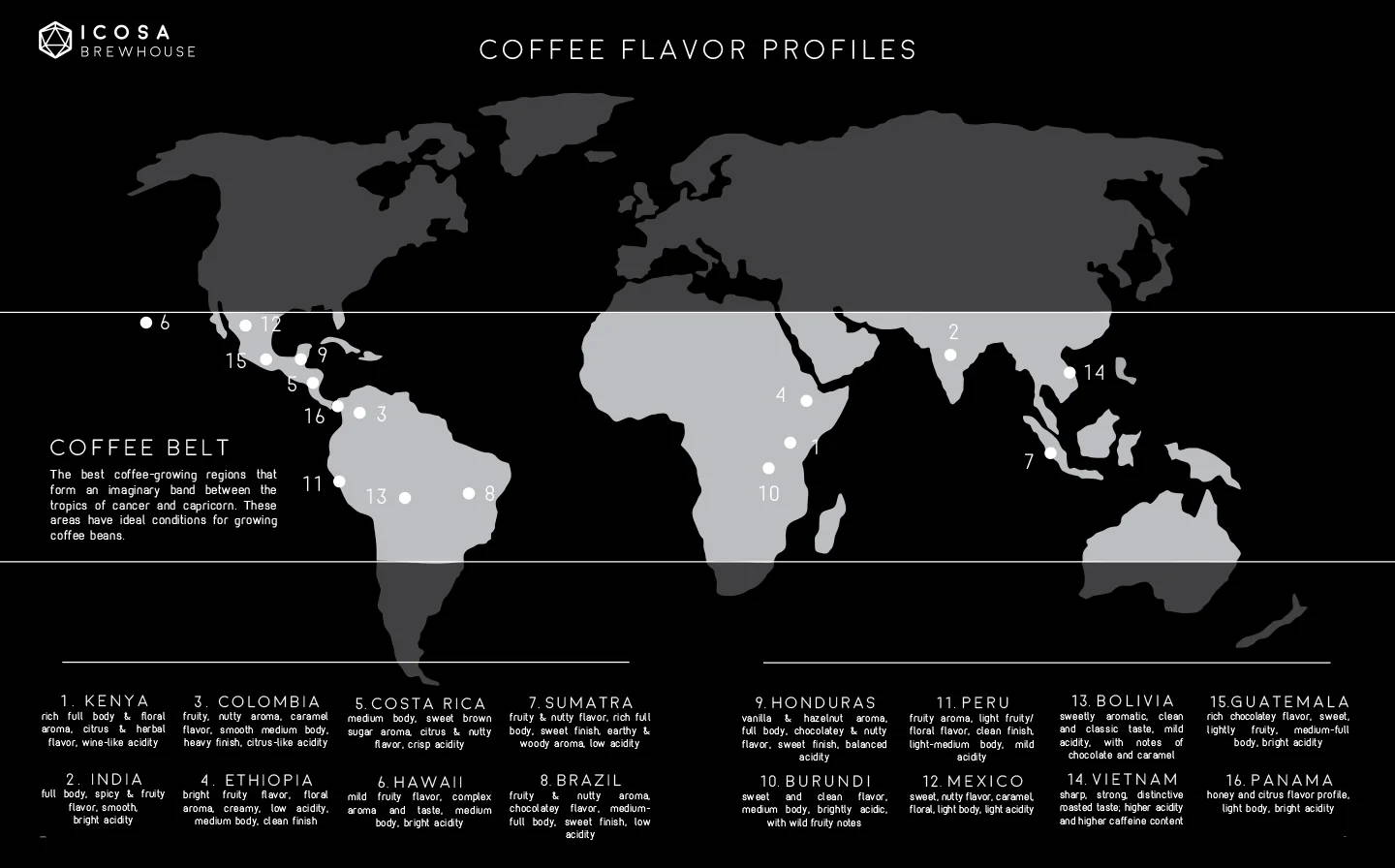
The best coffee-growing regions that form an imaginary band between the Tropics of Cancer and Capricorn. These areas have ideal conditions for growing coffee beans.
1. Kenya
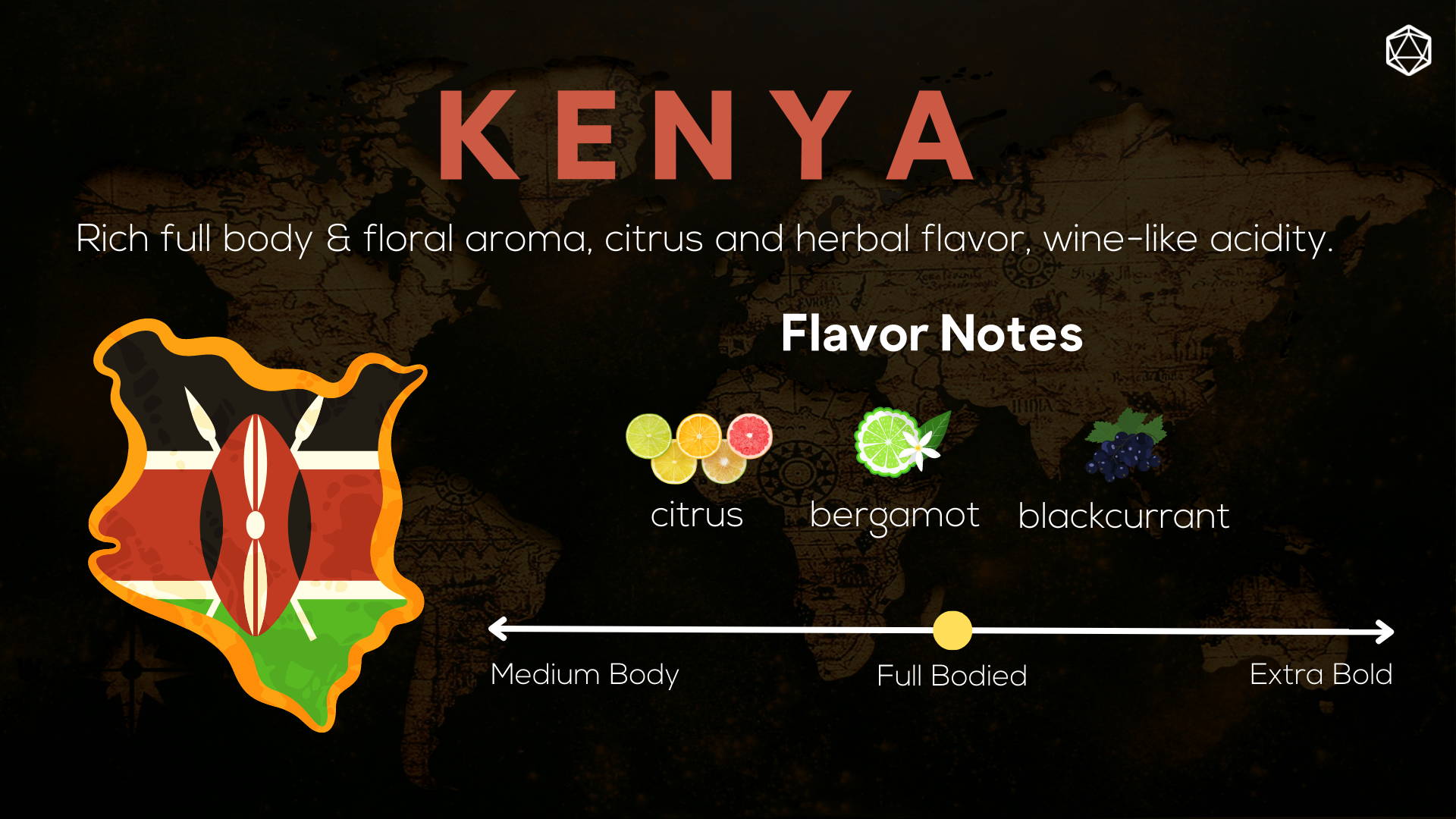
Kenya coffee is well known for its bright acidity, full body, and a distinct fruity and wine-like flavor that makes it stand out among other coffees. It is popular for its complex taste profile, which can include notes of blackcurrant, citrus, and bergamot.
Additionally, Kenya coffee is grown at high elevations, which contributes to its unique flavor (higher growing elevations contribute to more intense flavors since the coffee cherry has more time to develop).
Kenya is also one of the largest coffee exporters in Africa and the coffee beans are hand-picked (usually either by strip picking or selective picking), ensuring that only the ripest beans are harvested.
2. India
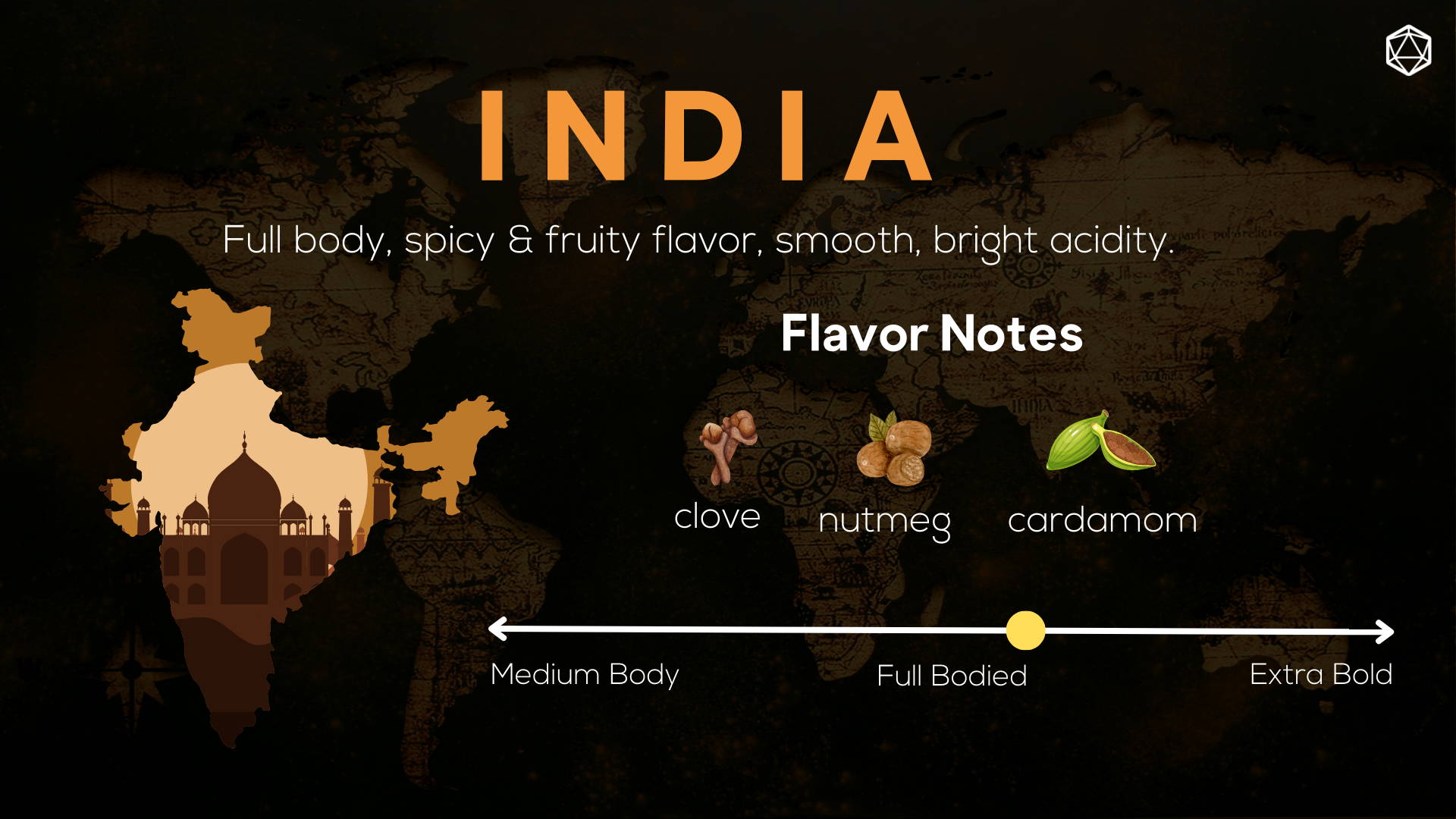
Indian coffee is grown in a variety of different regions and climates, and because of this it has been noted to be unique for its wide range of flavors and styles. The coffee grown in southern India, for example, is known for its full body, low acidity and earthy notes, while coffee from the Western Ghats region is known for its bright acidity and fruity notes.
Another factor that makes Indian coffee unique is its processing method. Indian coffee is mostly grown using the "dry process" (aka “natural process”) method, where the coffee cherries are dried in the sun before the beans are removed. This process is said to give Indian coffee a distinct, earthy flavor that sets it apart from coffee grown using other methods.
3. Colombia
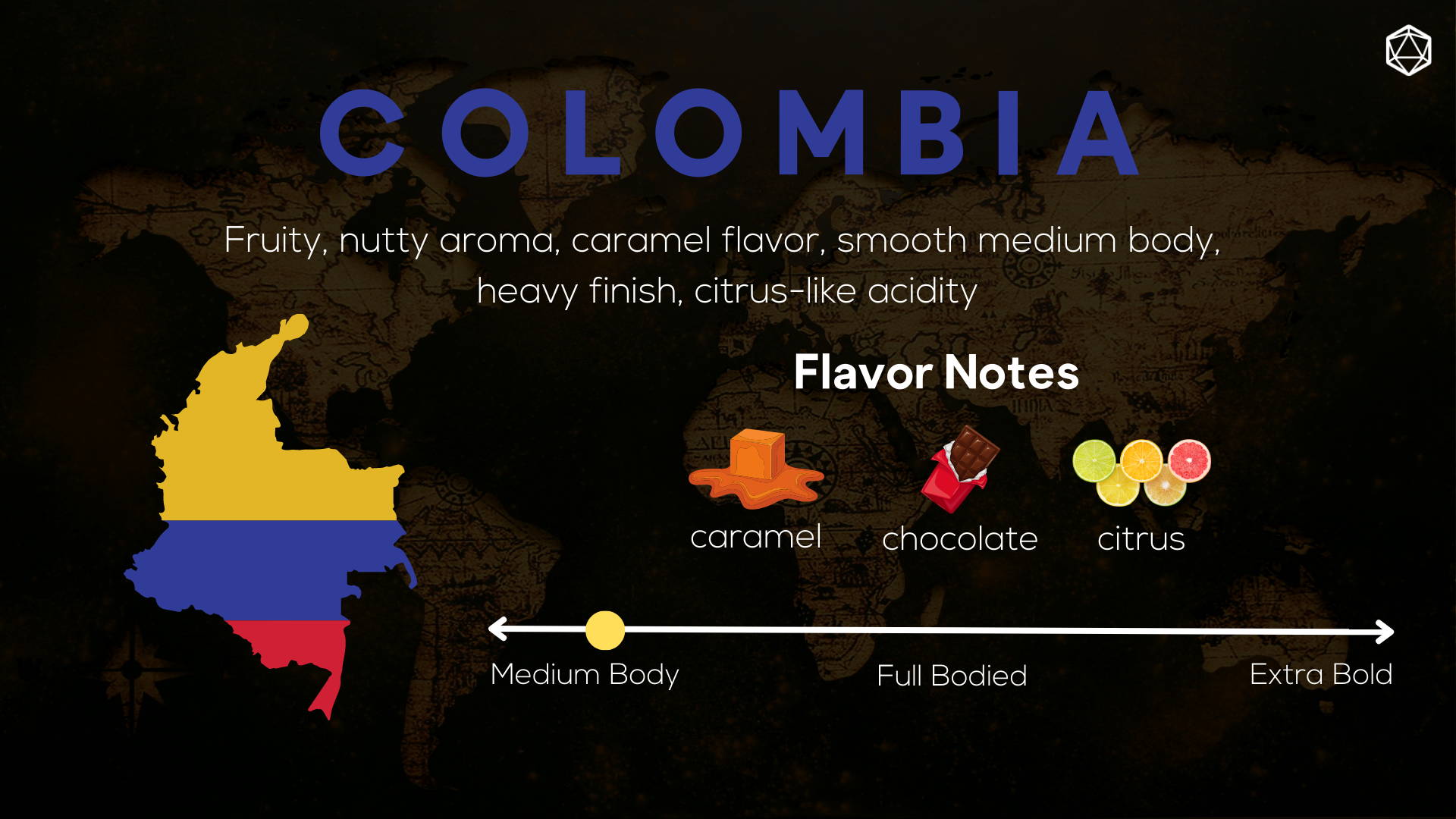
Colombian coffee is unique because of its mild citrus-like acidity, smooth body, and well-balanced flavor profile. It is known for its well-rounded taste, with notes of caramel, chocolate, and fruity notes, topped with a wonderful nutty aroma. Colombian coffee is grown in the Andean mountain region of Colombia, which provides the ideal conditions for coffee cultivation, including high elevations, rich soil, and a moderate climate.
Another factor that makes Colombian coffee unique is the long-standing tradition of coffee cultivation in the country. Colombian coffee has been grown for over 200 years, and the industry has been passed down from generation to generation. This has led to a wealth of knowledge and expertise in growing, harvesting, and processing coffee beans.
Colombian coffee is also unique because of its certification, Colombian coffee is certified as 100% Colombian and is also certified as "Specialty Coffee" by the Specialty Coffee Association of America (SCAA). This certification guarantees that the coffee beans have a high quality and that they have been grown and processed according to specific standards.
4. Ethopia
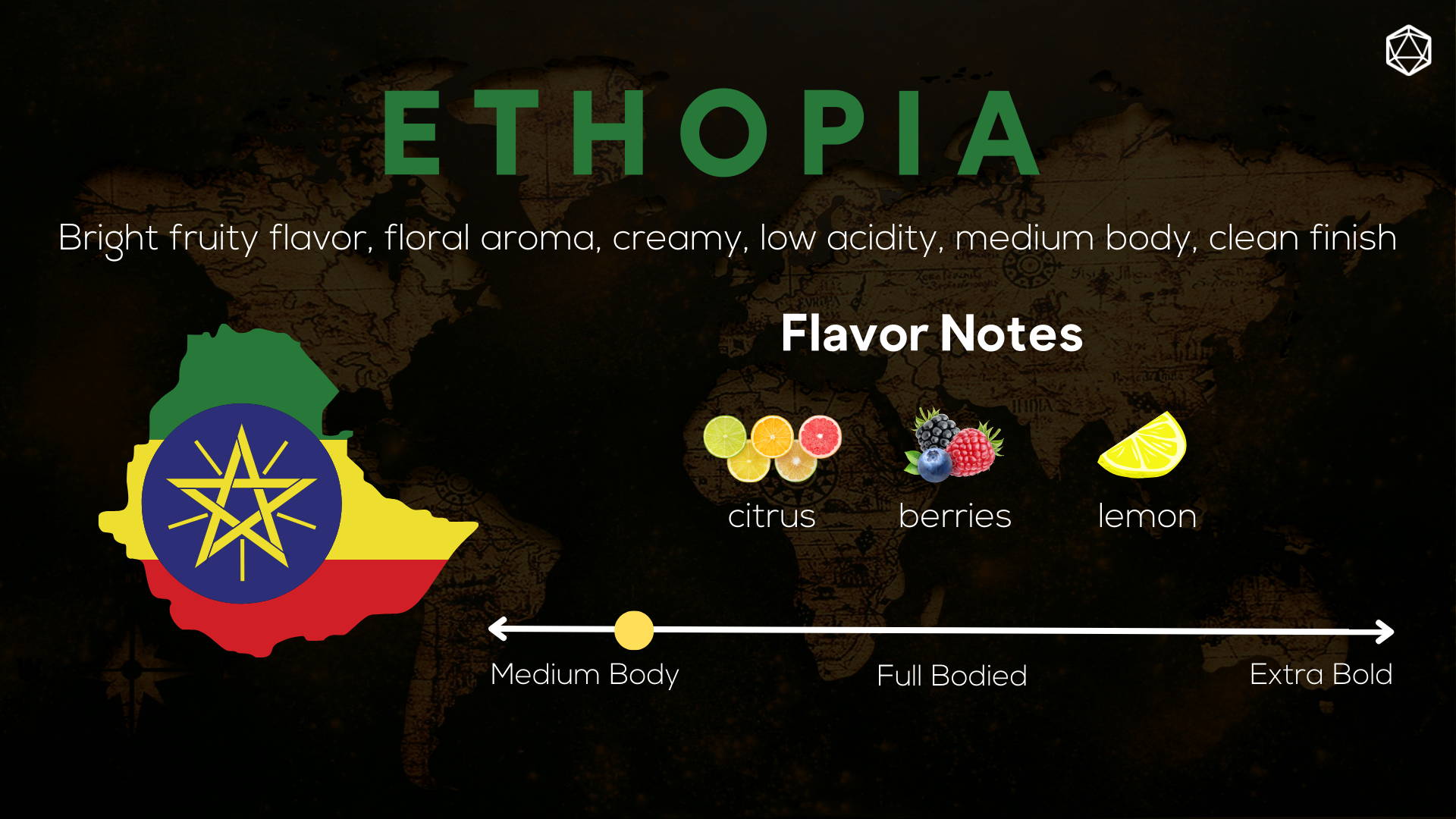
Ethiopia is known as the birthplace of coffee and is considered to be the origin of all Arabica coffee varieties. The country is home to a diverse range of coffee varieties and growing regions, each with its own unique flavor profile. Ethiopian coffee is known for its low acidity, bright complex fruity and floral notes, and a distinctive clean finish.
One of the unique things about Ethiopian coffee is the traditional method of processing the beans. Coffee is often dried on raised beds, which can contribute to the coffee's unique flavor profile. Additionally, coffee is often dried with the fruit still on the bean using the natural (aka dry) processing method, which further enhances the coffee's unique taste.
Ethiopia is also unique because it has a wide variety of heirloom coffee varieties that have been passed down for centuries. This leads to a wide range of different flavor profiles, and each variety is unique in its own way. This diversity of coffee varieties is not found in any other coffee producing country. Some of the most popular ones include:
- Ethiopia Harrar: grown in the Harrar region of Ethiopia, known for its full body, wine-like flavor, and fruity undertones.
- Ethiopia Sidamo: grown in the Sidamo region of Ethiopia, known for its bright acidity and floral notes.
- Ethiopia Yirgacheffe: grown in the Yirgacheffe region of Ethiopia, known for its complex flavor profile, including notes of citrus, bergamot, and jasmine.
- Ethiopia Limu: grown in the Limu region of Ethiopia, known for its full body and rich, chocolatey flavor.
5. Costa Rica
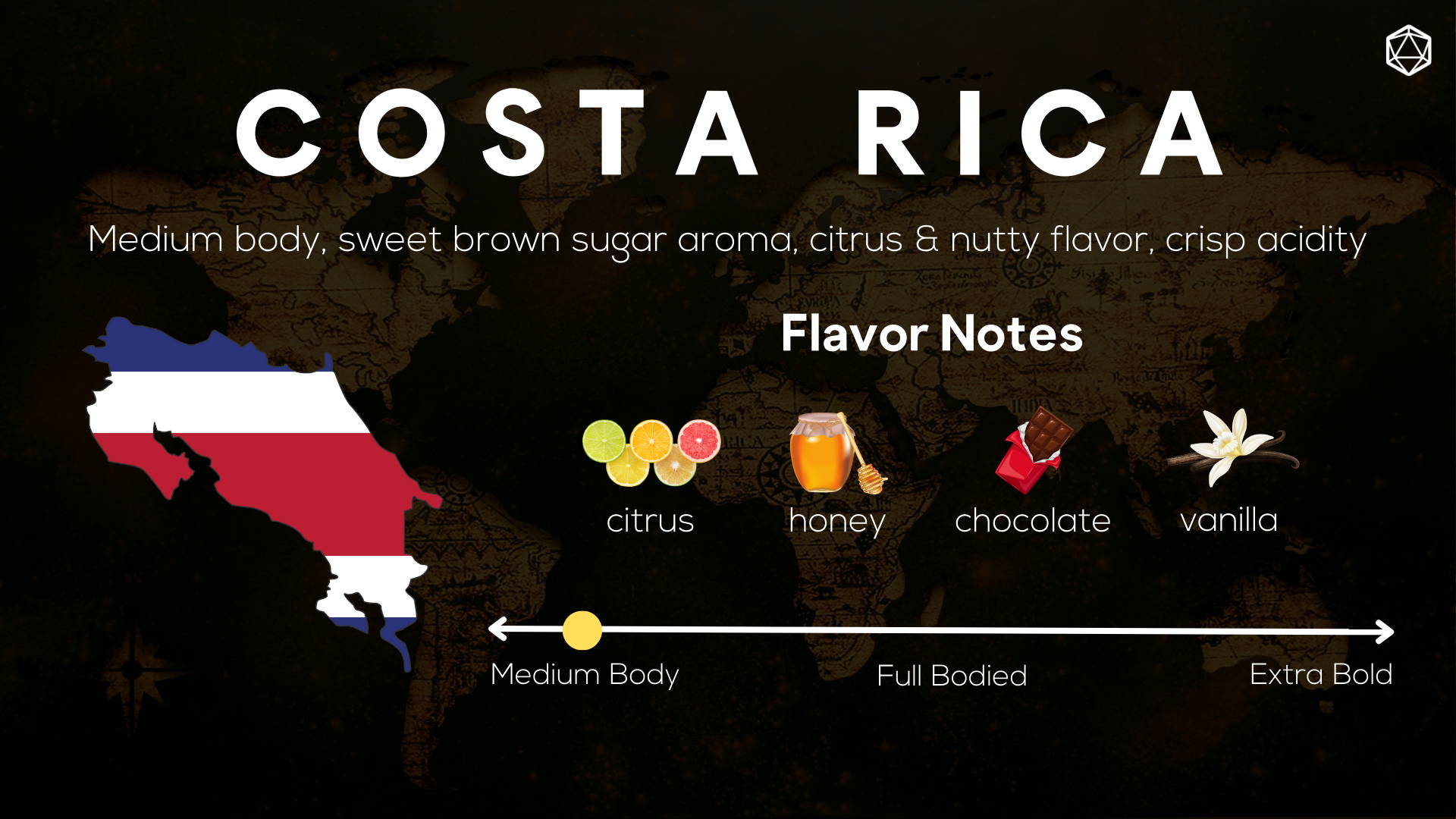
Costa Rican coffee is known for its unique and distinct flavor. The flavor profile is characterized by its bright acidity, medium body, and citrus-nutty flavors, making it a great treat for coffee connoisseurs. The country's ideal growing conditions, combined with its varied microclimates and terrains, lead to a range of flavors that can be enjoyed by all.
Costa Rica is known for its commitment to sustainable coffee farming and many farmers use shade-grown methods that promote biodiversity. This not only benefits the planet but also contributes to the unique and delicate flavor profile of the coffee.
The coffee beans grown in Costa Rica are mainly of the Arabica variety, known for its complex and nuanced flavors, as well as its delicate sweet aroma. The Arabica variety is considered higher quality than the robusta variety and often has a sweeter and more delicate taste.
Costa Rica’s coffee is processed using the "wet" method and in the hands of the right roaster, you can experience its full flavor and unique character of each coffee variety.
In summary, drinking a cup of Costa Rican coffee is an experience of flavors, aroma and a commitment to sustainability.
These are just our 5 picks from the diverse world of coffee from around the globe. Explore a world of coffee flavor with these other well known specialty coffee growing destinations:
6. Hawaii
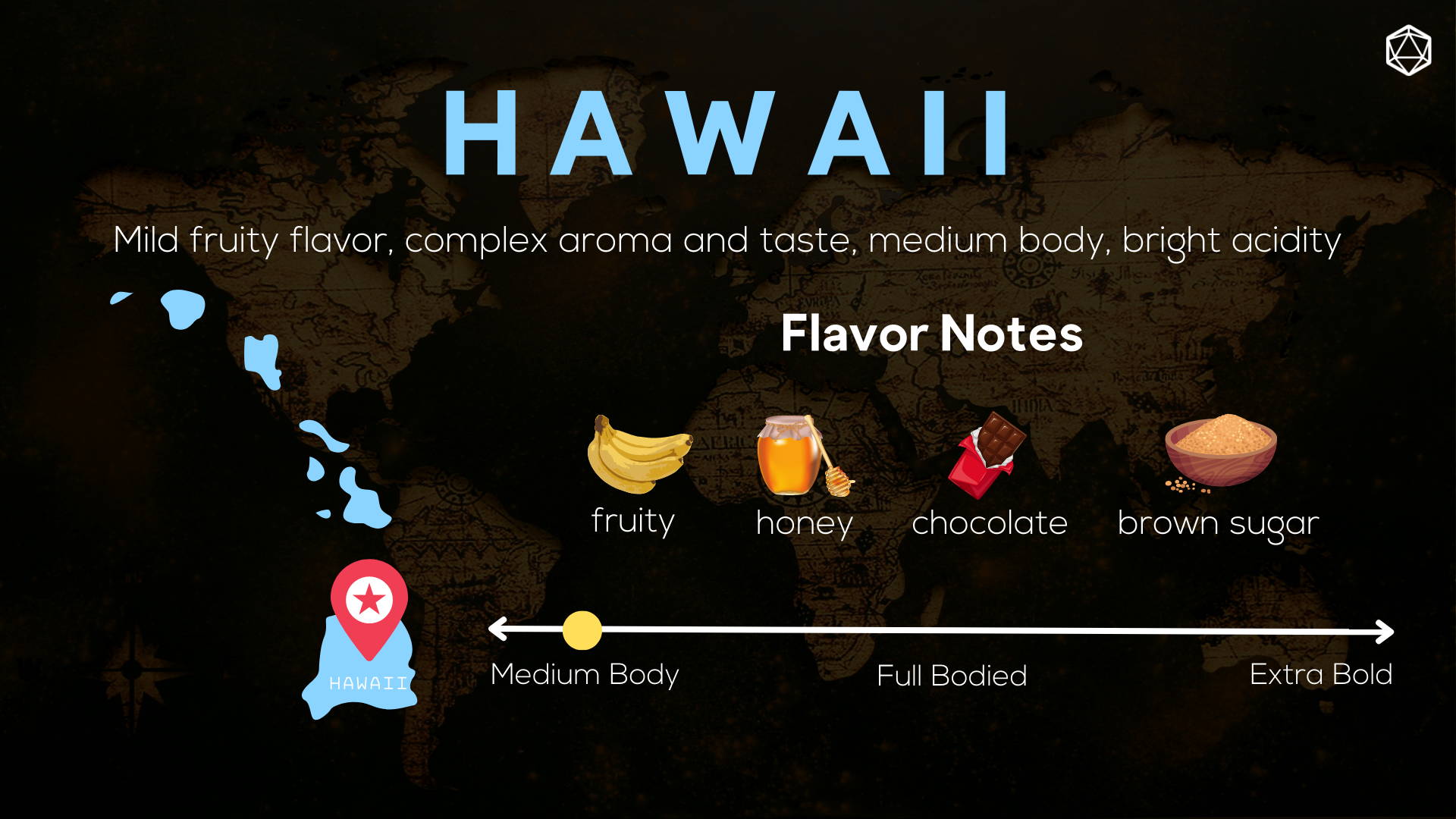
7. Sumatra
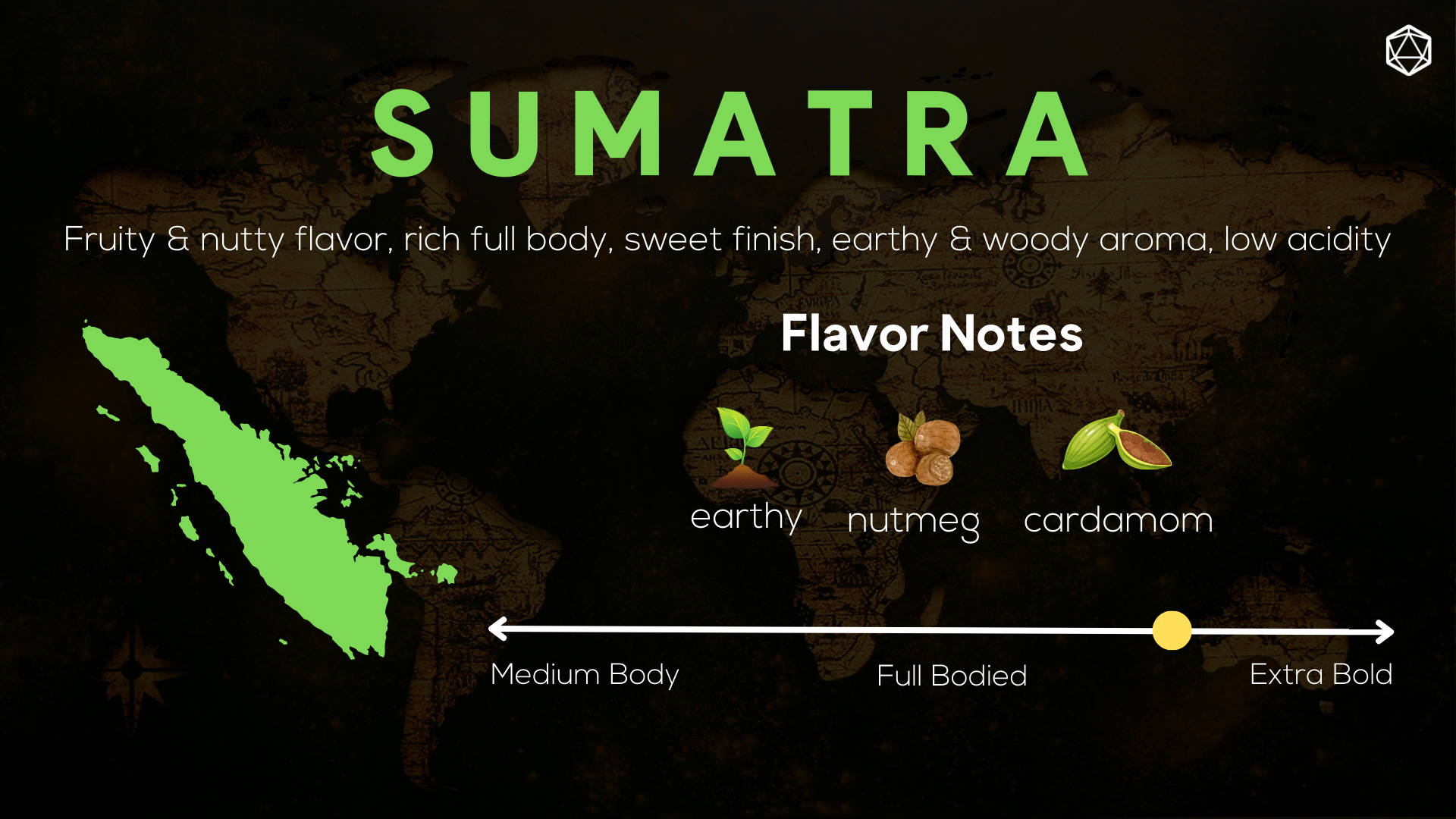
8. Brazil
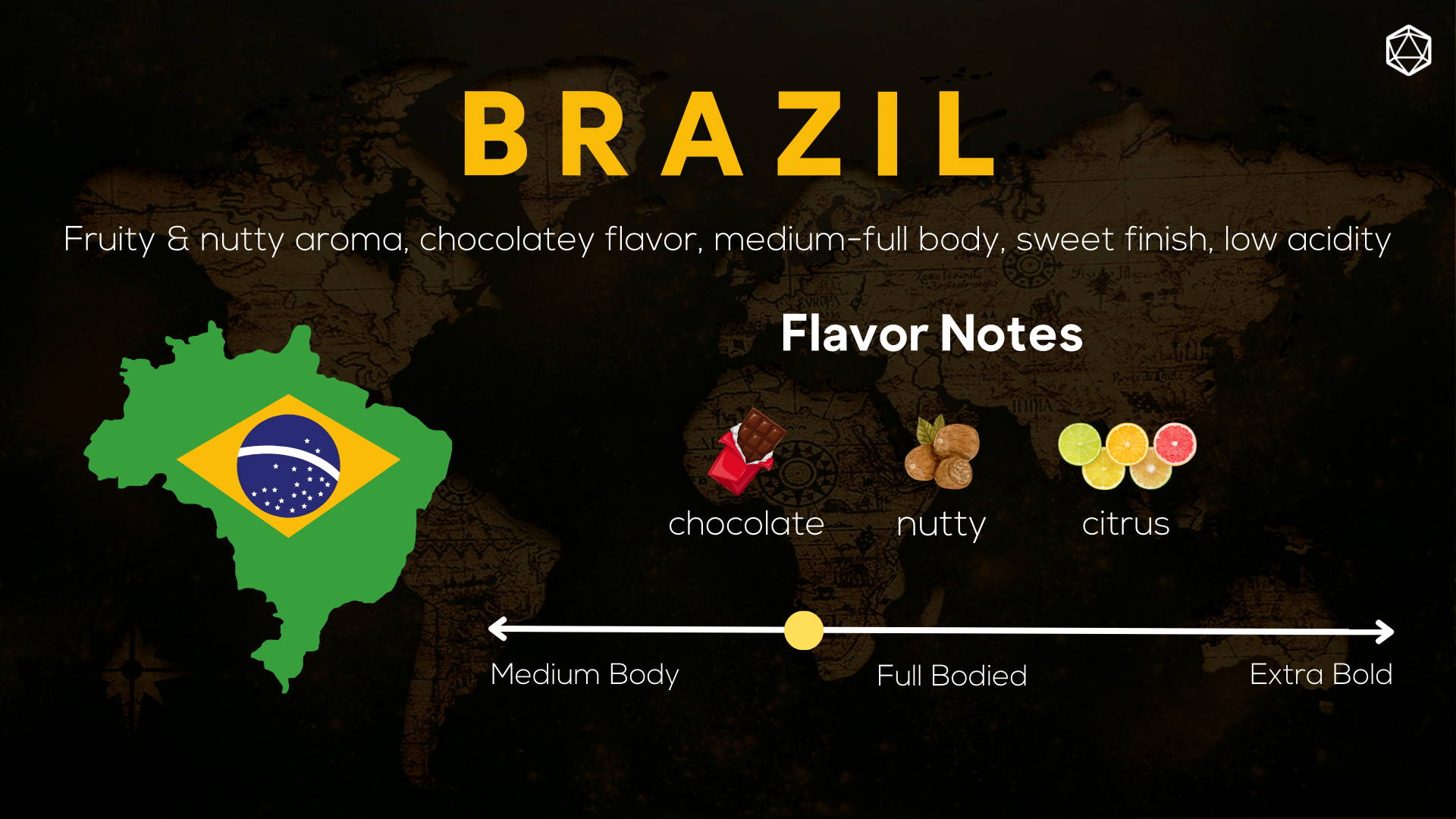
9. Honduras
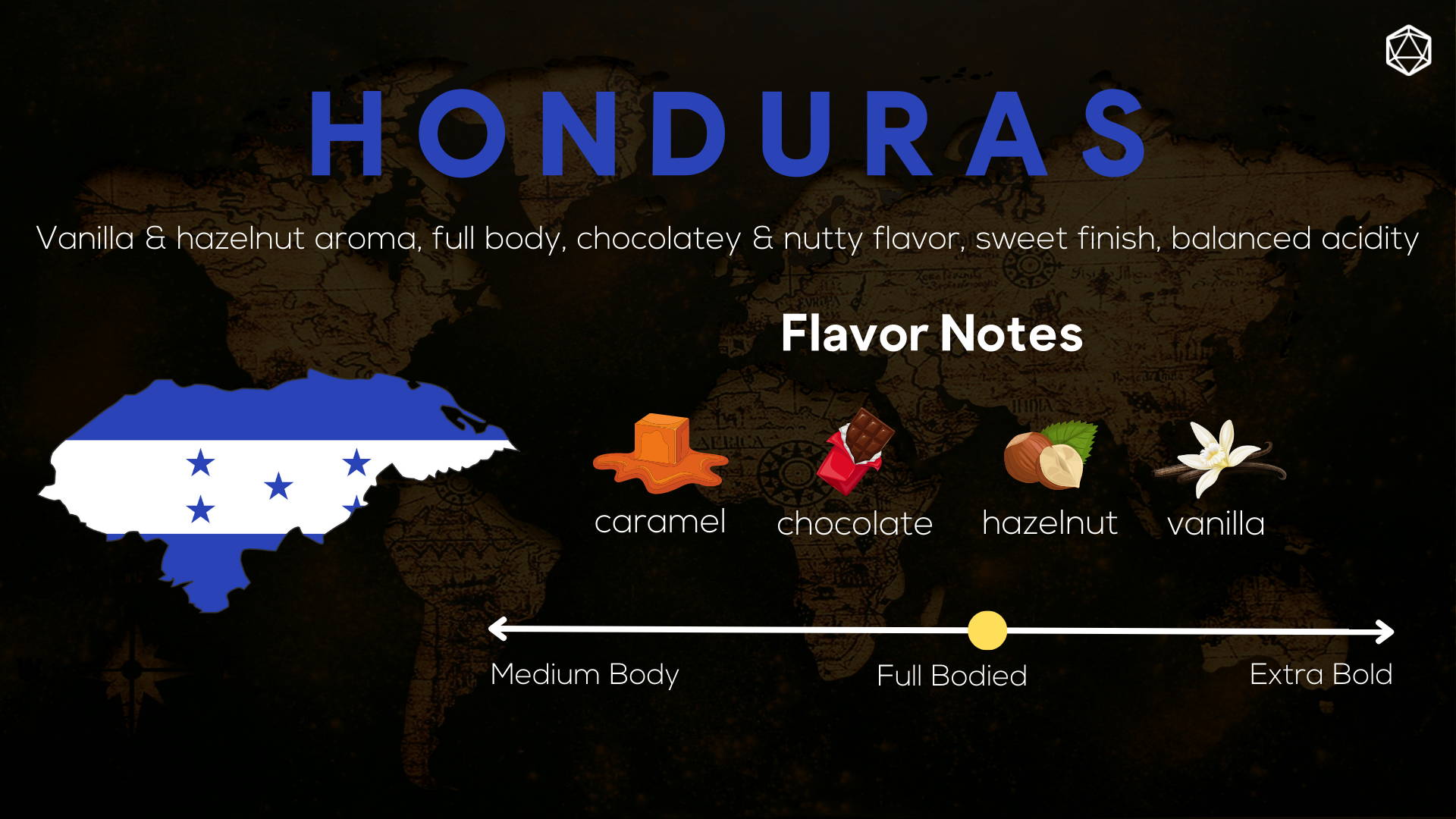
10. Burundi
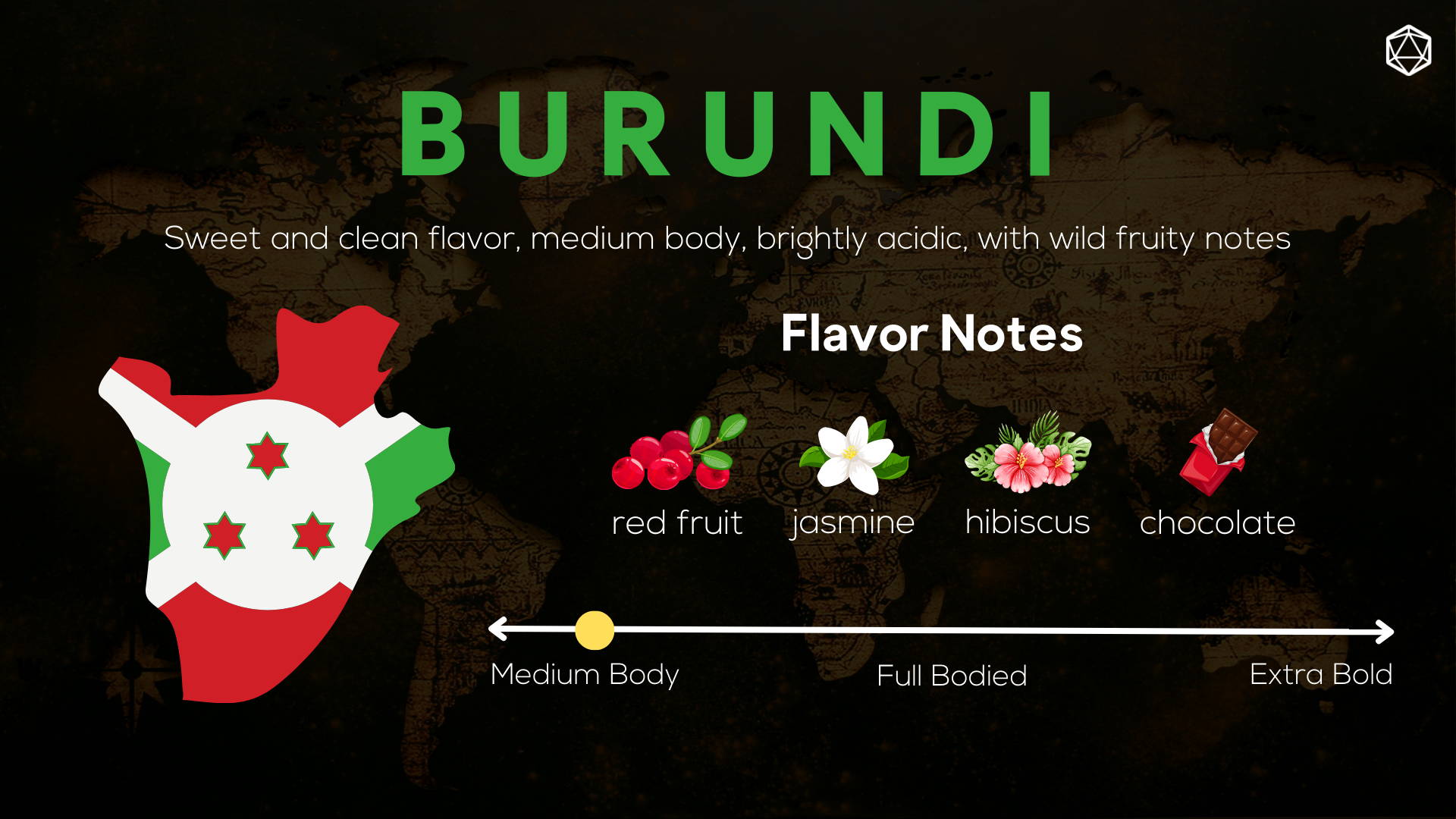
11. Peru
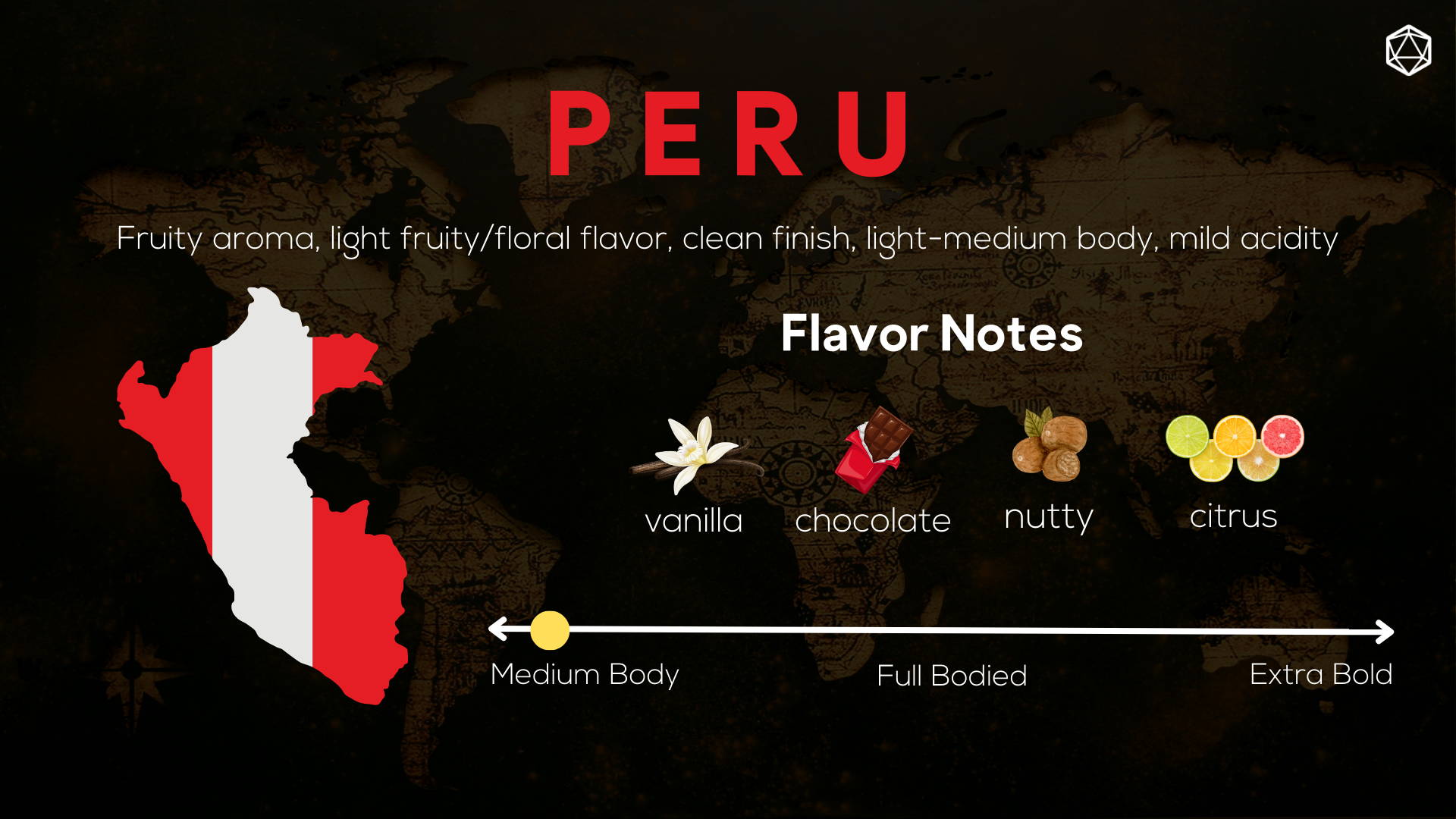
12. Mexico
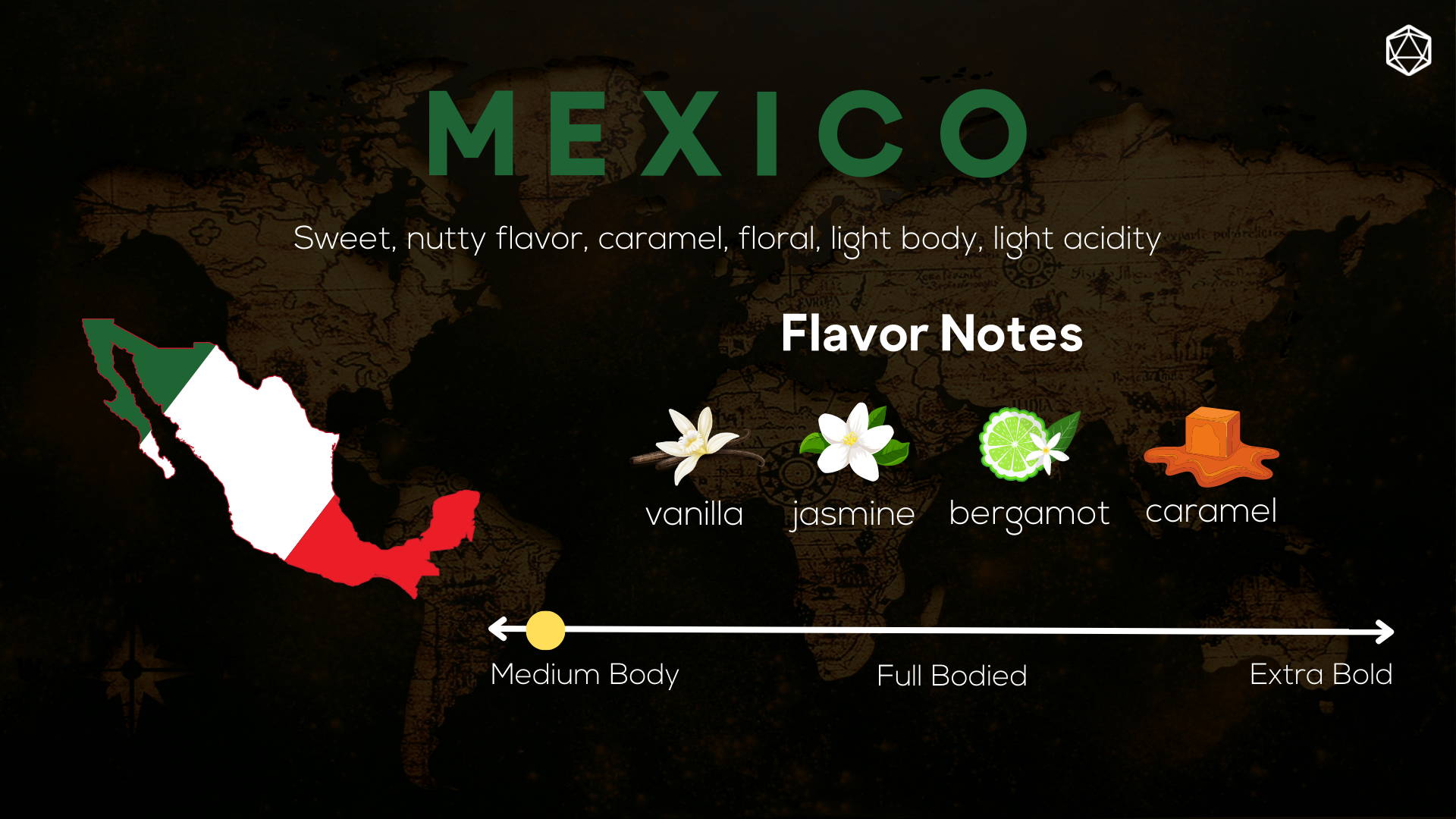
13. Bolivia
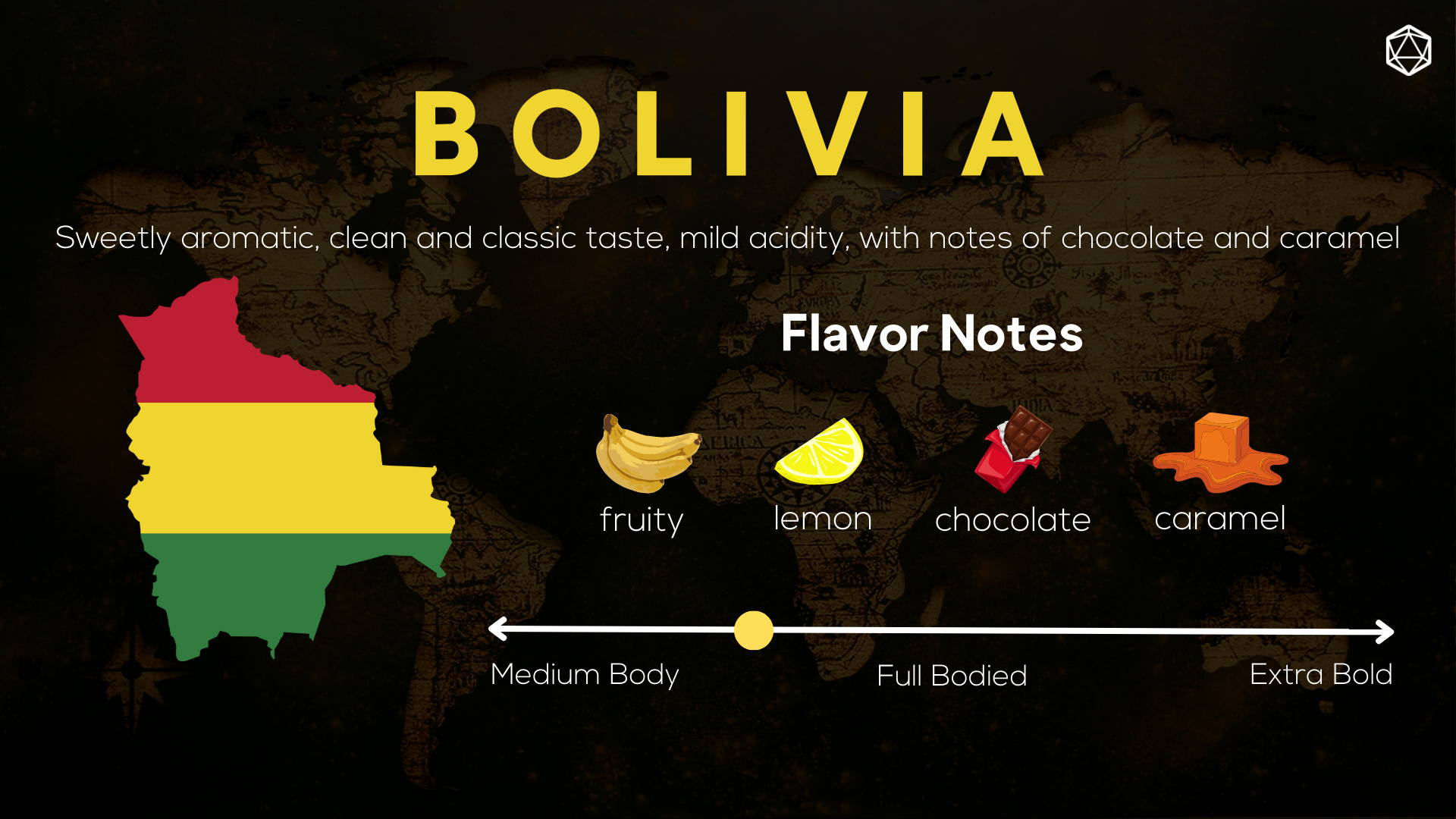
14. Vietnam
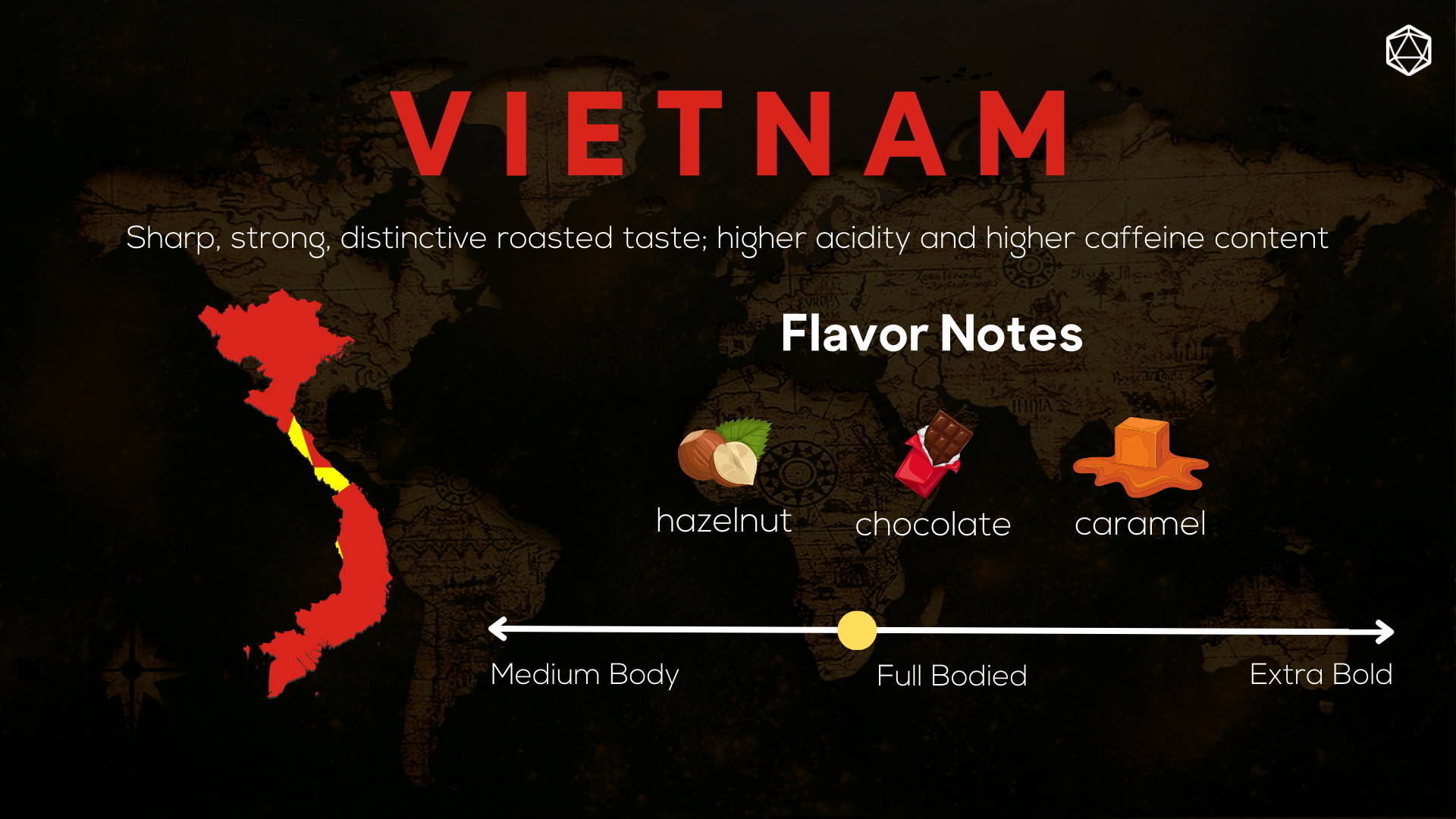
15. Guatemala
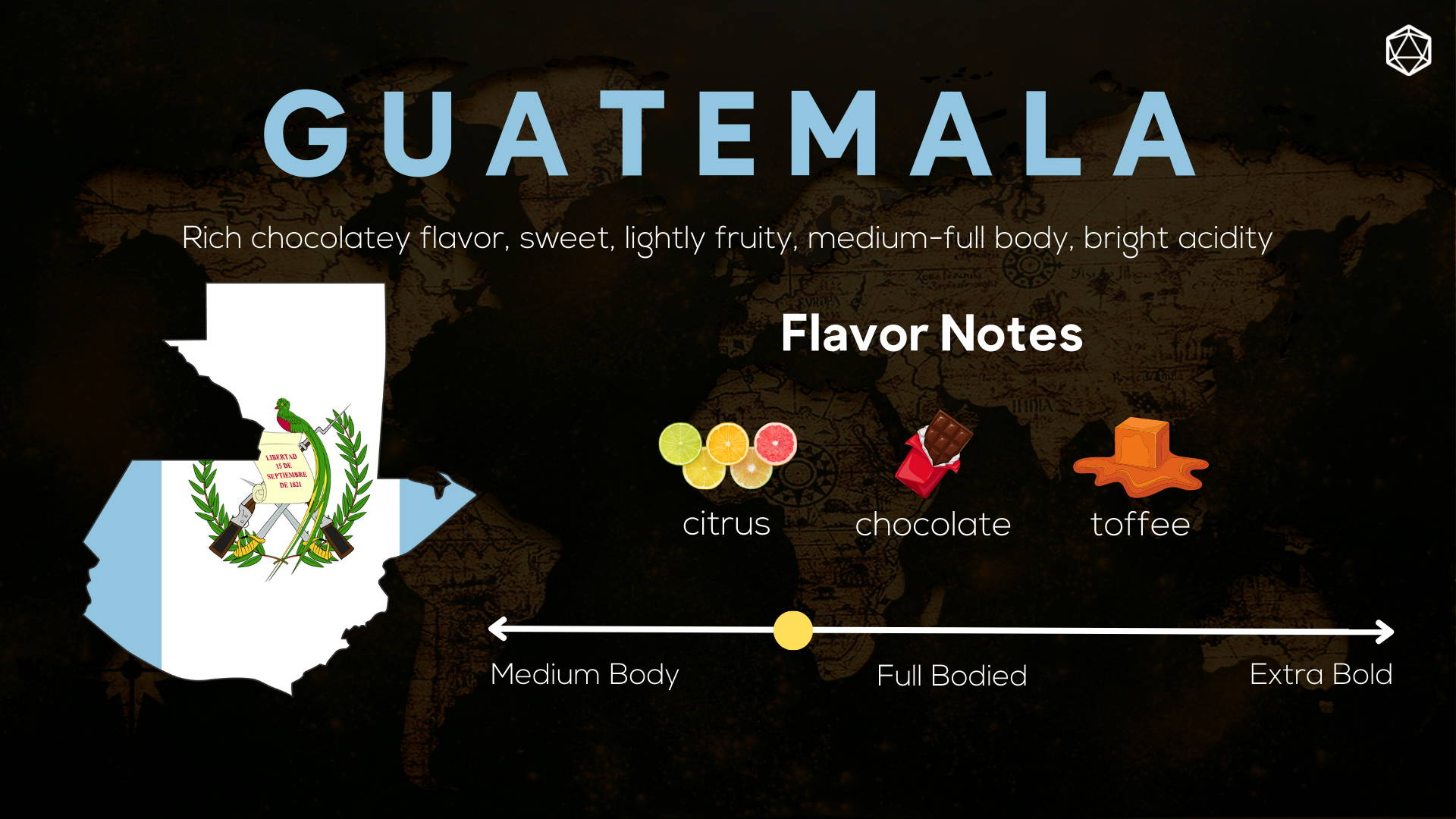
16. Panama
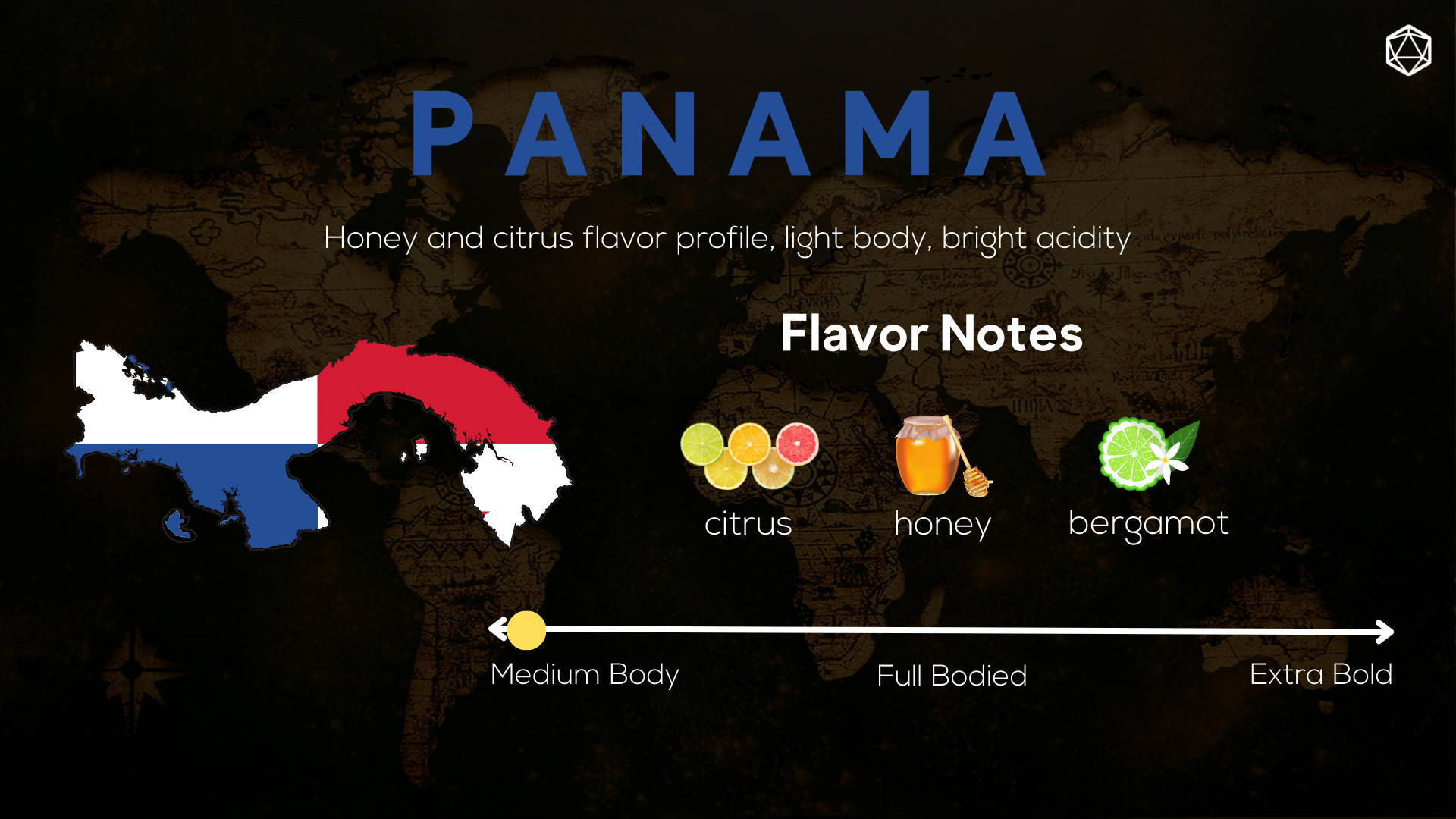
Coffee is a beloved beverage enjoyed by people as diverse as the origins and varieties of the coffees themselves! From the bold and earthy tastes of Ethiopian coffee to the bright and fruity notes of Colombian coffee, there is something for every palate.
Whether you're a coffee connoisseur or simply looking to try something new, exploring the different flavors of coffee from around the world is a great way to expand your coffee horizons. So next time you're looking to brew a cup of coffee, try exploring by taking a trip around the world with different beans, and enjoy the unique flavors each country has to offer.



